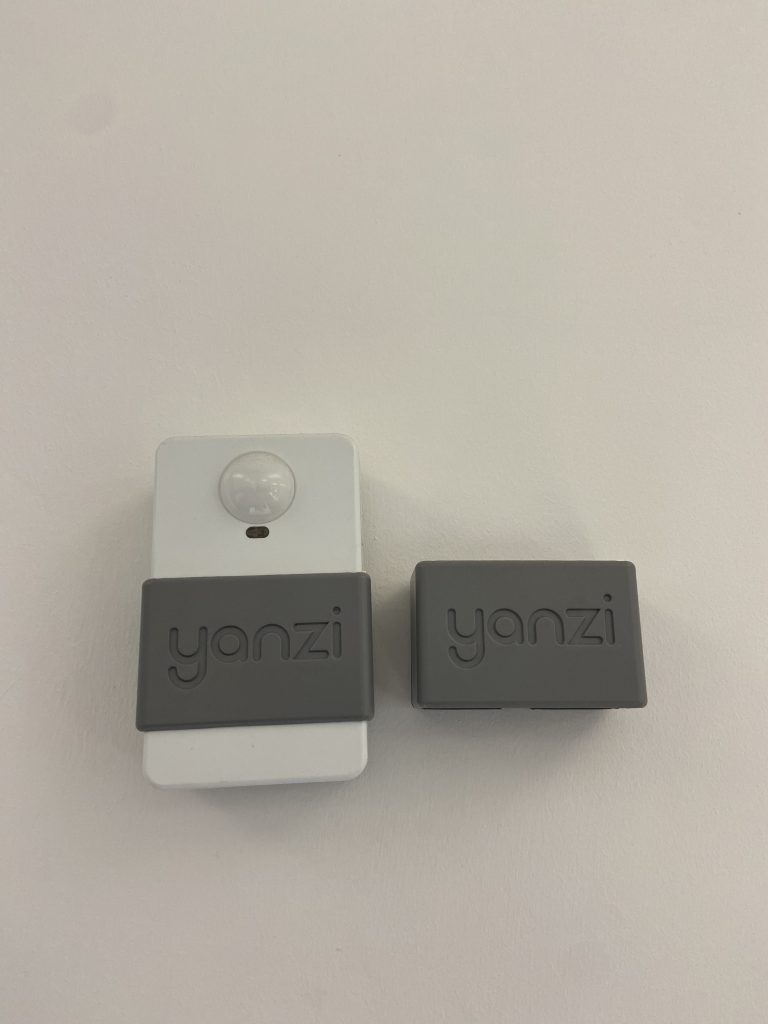Support Assistants play an essential role in Customer Services at Spica. They work with our Lead Technical Engineers, assisting with onsite sensor installations and handling issues raised by clients.
One of our Support Assistants – Archie Collins – was recently in Edinburgh for his first installation project and we had the chance to interview him to learn more about how an installation takes place.
Q: What did you get up to on your first install?
A: The Edinburgh site was a newly built office comprising three floors, on which over 2000 Haltian Presence and Comfort sensors were to be installed. The first step is to unpack and configure all sensors to ensure they are working accurately. Then using a smartphone, we would scan the QR codes printed onto each sensor and enter relevant information such as the desk names and descriptions, to exactly pinpoint the location of each sensor as it comes up on the Spica Workplace platform GemEx Engine. Once scanned, we begin installing the sensors by placing them under desks to capture occupancy data. Comfort sensors are installed on walls to provide data on air quality and noise levels. We then move on to installing the gateways which communicate with the sensors and provide us with live data.
We then returned to the installation site at a later date to install PointGrab sensors and Senion beacons in the building. PointGrab sensors capture live occupancy data in meeting rooms, and Senion beacons communicate with employees’ phones in the building, to provide them with accurate geolocation information. This allows employees to navigate directly to desks, meeting rooms and other facilities in the building using our Spica Workplace App.



Q: Were there any challenges you encountered?
A: One slightly challenging aspect of the install was having employees occasionally working at their desks when we needed to install a device. However, we overcame this challenge by asking politely at an opportune moment if we could install the sensor and explained it would take a matter of seconds to do so. Some employees would ask questions regarding the sensor, and we would do our best to answer them and reassure employees that these sensors were capturing occupancy and not monitoring them.
Days can be slightly longer compared to when I’m in the office and more physically demanding. But we always do our best to ensure our work satisfies the client and as a team we collaborate and work well together.
Q: What skills and knowledge have you picked up on the installs?
A: I had some theoretical knowledge prior to the installation. But due to this project, I was able to develop a conceptual understanding of how theory can be translated to practice. Furthermore, I had the opportunity to communicate with the clients directly and understand the significance behind these installations. Though it was a physically demanding task, in terms of experience, it was very informative and rewarding; I look forward to doing it again in the future!
Q: Are there any pre-installation tasks you must do prior to going onsite?
A: Before travelling, we ensure that our itinerary is properly planned such as the hotel stay and the flight bookings. We must make sure the devices and sensors are delivered directly to the client, and they are informed about the delivery. We also ensure we have sufficient and correct floorplan, desk, meeting room and facility information from the client to ensure the installation goes smoothly and efficiently.
Before going on site, we also set the building up on GemEx after obtaining the floor plan from the client. We then edit the floor plan, removing any unnecessary objects to display professional and aesthetic appearance. Once prepared, we upload it to GemEx and then plot the device points onto the floor plan.
Q: How would you describe your typical day at Spica?
A: On a typical day at Spica, I check my emails and Slack messages to check if there is an urgent task that needs to be completed or that requires my support. This allows urgent projects and tasks to be prioritised and processed as fast and as efficiently as possible.
In the afternoon and/or if there are no urgent tasks to be completed, I usually work on other projects we have in progress and offer my support wherever possible. I communicate often with other colleagues to ensure we collaborate well and offer the best possible service to clients.
Q: How did your journey at Spica begin?
A: I’ve had an enjoyable journey so far at Spica, beginning with me doing work experience at Spica in High School. During my work experience, I immersed myself into the Spica community, as well as experienced and learned about many areas and processes of the business. At the end of my work experience, I was then invited back to join the Spica team on a part-time basis, alongside my full-time A Level and University studies, working in the Customer Service Squad, offering configuration and installation support to my colleagues and clients.
Q: Do you have any advice for people starting in your position?
A: My advice would be that immerse yourself in the experience; come into the office and get to know the team – it’s not just about getting to know your colleagues, but also having the opportunity to learn and grow with them. If you get the opportunity to do an installation in the role, definitely take it, you’ll be surrounded by a close-knit and supportive team and will have an amazing experience.
A huge thank you to Archie for taking part in this interview.











